By August, gardens can often start to look a little tired and lacklustre with both plants and gardeners running out of steam.
However, there’s no need to say goodbye to summer just yet, as there are so many late-flowering plants that will perk up your fading displays and keep blooming for months to come.
Last year I introduced Aster x frikartii “Mönch” into one of our perennial borders for the first time. This lovely mildew-resistant variety has good, dark green foliage and masses of yellow-centred, lavender-blue daisies.
It bloomed non-stop from mid-July until well into October, so I will certainly be planting some more of it. Another champion perennial for long, late-season flowering, and tolerant of growing in both sun and shade in our garden, is the hardy geranium “Rozanne” with saucer-shaped flowers of violet-blue with white centres.
A must-have perennial also for the August garden is clump-forming crocosmia, often called montbretia, in lively tones of red, soft oranges and yellow. We grow the wonderfully brash cultivar “Emily McKenzie” with large, orange flowers flared wide open to show beautiful, mahogany markings at the heart of each petal — perfect for adding late-summer vibrancy to garden borders.
Agapanthus, also known as the African lily, will bring a Mediterranean or semi-tropical vibe to your garden in late summer. Best in full sun, we particularly like Agapanthus “Navy Blue” for its reliable hardiness in our colder midlands garden. It’s a superb performer with dark navy-blue flower buds that open to large, rounded heads of rich blue, trumpet-like blooms.
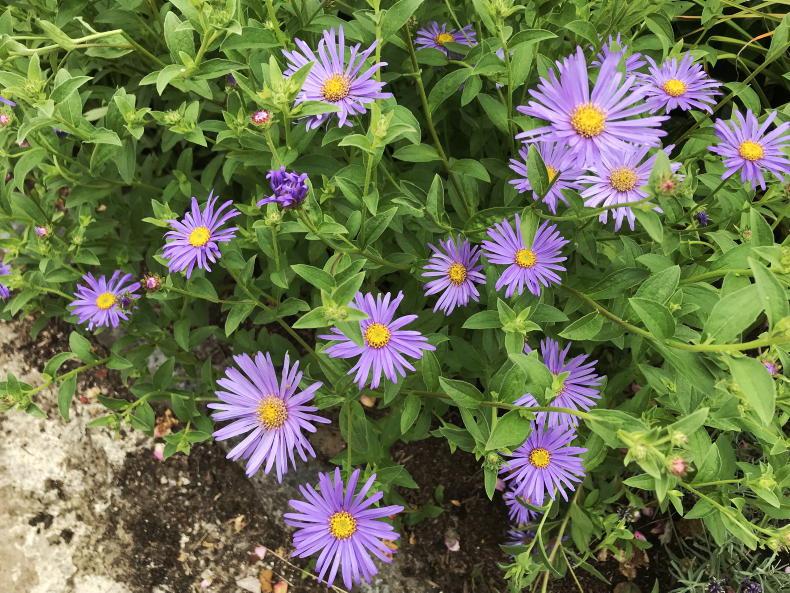
Aster x frikartii 'Mönch’ is outstanding for long-lasting, late season flowering. \ Mary Keenan
Other late perennials to consider are Helenium, Phlox, Persicaria, Monarda, Penstemon and Rudbeckia — these are all good, reliable plants that will boost colour and fill late season gaps.
We also grow the perennial sunflower Helianthus “Lemon Queen”. Its sturdy stems reach two metres tall and are topped with masses of beautiful, soft lemon-yellow, daisy-like blooms from July into autumn.
But adding late flowering plants and colour will not sustain border displays alone. A little effort to continue weeding, dead-heading, pruning and border-edging will also go a long way to ensuring your outdoor space continues to look good well into autumn.
I keep my secateurs with me in the garden at all times to remove spent flower heads and fading stems whenever I have a few minutes to spare.
Regular dead heading helps to lengthen the flowering period of many plants and especially roses and dahlias, as it tricks them into producing more flowers rather than directing their energy into developing seeds.
Tying in and supporting your taller, late-summer perennials to help prevent them from flopping over is also a very effective practise to keep borders looking neat and crisp.
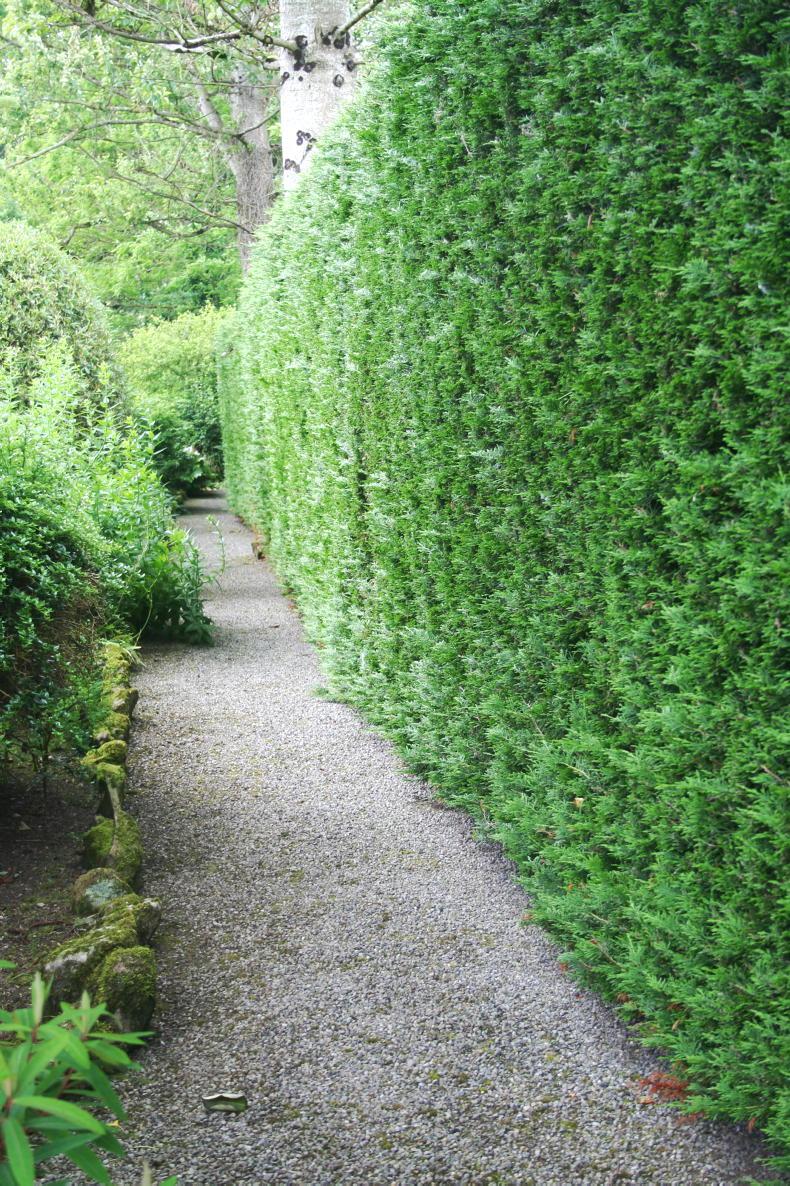
For ease of maintenance, wherever possible, we maintain a path or empty space, that is wide enough to move about comfortably with a ladder or platform, between hedges and adjoining borders. The soil here is full of roots and difficult to plant anyway. \ Mary Keenan
By the end of the month, the vast majority of nesting birds will have fledged and this marks the start of one of the biggest jobs in our garden, which is the annual marathon of hedge cutting.
We begin with the evergreens and conifers including laurel, box, pyracantha, leylandii and thuja so that they can make some protective regrowth before winter. Later, we trim deciduous hedges like beech.
A long-reach hedge trimmer minimises the need to use ladders and platforms. Cut the sides first. It’s easier if you start from the bottom and work up, so that the cut foliage drops cleanly away to the ground.
As you trim, slope the hedge slightly inwards so it is about one third wider at the base than the top. This stops the hedge thinning at the base by allowing more light to reach lower branches to encourage new growth.
We trim the tops off last. When working on garden hedges, check first that there are no birds nesting, as it is an offence under the Wildlife Act to interfere with a nest while it is in active use.

Camellia x williamsii ‘Jury’s Yellow’. \ Mary Keenan
Camellias, rhododendrons and azaleas, which put on a colourful show in the spring, are forming their flower buds now for next year.
If they are too dry through summer and autumn the buds will not form properly. Then, come spring, the flower buds either don’t open, fall off before flowering or partially open and then fall off because of dehydration the previous autumn.
It’s important, therefore, to keep these acid-loving plants well-watered between July and October, especially if growing in a container.
If possible, use rainwater that is slightly acidic, wisely collected in water butts. If your tap water is limey, watering with it will make the soil or compost more alkaline, leading to problems for acid-loving plants.
To get over this, use an occasional liquid ericaceous feed at the same time as watering or apply chelated iron, such as sequestrene, around the plant roots twice a year- once in spring and again in autumn.
• Sunday 28 August: Irish Specialist Nurseries Association (ISNA) Plant Fair. Time: 9.30am to 5pm. Venue: Airfield Estate, Dundrum, Co Dublin. Specialist plant nurseries and other stalls selling garden-related items.
• Saturday 13 to Monday 22 August: National Heritage Week.
Check out www.heritageweek.ie for details of special garden openings and events across the country.
Mary Keenan and Ross Doyle run Gash Gardens, Co. Laois open to the public.
www.gashgardens.ie
By August, gardens can often start to look a little tired and lacklustre with both plants and gardeners running out of steam.
However, there’s no need to say goodbye to summer just yet, as there are so many late-flowering plants that will perk up your fading displays and keep blooming for months to come.
Last year I introduced Aster x frikartii “Mönch” into one of our perennial borders for the first time. This lovely mildew-resistant variety has good, dark green foliage and masses of yellow-centred, lavender-blue daisies.
It bloomed non-stop from mid-July until well into October, so I will certainly be planting some more of it. Another champion perennial for long, late-season flowering, and tolerant of growing in both sun and shade in our garden, is the hardy geranium “Rozanne” with saucer-shaped flowers of violet-blue with white centres.
A must-have perennial also for the August garden is clump-forming crocosmia, often called montbretia, in lively tones of red, soft oranges and yellow. We grow the wonderfully brash cultivar “Emily McKenzie” with large, orange flowers flared wide open to show beautiful, mahogany markings at the heart of each petal — perfect for adding late-summer vibrancy to garden borders.
Agapanthus, also known as the African lily, will bring a Mediterranean or semi-tropical vibe to your garden in late summer. Best in full sun, we particularly like Agapanthus “Navy Blue” for its reliable hardiness in our colder midlands garden. It’s a superb performer with dark navy-blue flower buds that open to large, rounded heads of rich blue, trumpet-like blooms.

Aster x frikartii 'Mönch’ is outstanding for long-lasting, late season flowering. \ Mary Keenan
Other late perennials to consider are Helenium, Phlox, Persicaria, Monarda, Penstemon and Rudbeckia — these are all good, reliable plants that will boost colour and fill late season gaps.
We also grow the perennial sunflower Helianthus “Lemon Queen”. Its sturdy stems reach two metres tall and are topped with masses of beautiful, soft lemon-yellow, daisy-like blooms from July into autumn.
But adding late flowering plants and colour will not sustain border displays alone. A little effort to continue weeding, dead-heading, pruning and border-edging will also go a long way to ensuring your outdoor space continues to look good well into autumn.
I keep my secateurs with me in the garden at all times to remove spent flower heads and fading stems whenever I have a few minutes to spare.
Regular dead heading helps to lengthen the flowering period of many plants and especially roses and dahlias, as it tricks them into producing more flowers rather than directing their energy into developing seeds.
Tying in and supporting your taller, late-summer perennials to help prevent them from flopping over is also a very effective practise to keep borders looking neat and crisp.

For ease of maintenance, wherever possible, we maintain a path or empty space, that is wide enough to move about comfortably with a ladder or platform, between hedges and adjoining borders. The soil here is full of roots and difficult to plant anyway. \ Mary Keenan
By the end of the month, the vast majority of nesting birds will have fledged and this marks the start of one of the biggest jobs in our garden, which is the annual marathon of hedge cutting.
We begin with the evergreens and conifers including laurel, box, pyracantha, leylandii and thuja so that they can make some protective regrowth before winter. Later, we trim deciduous hedges like beech.
A long-reach hedge trimmer minimises the need to use ladders and platforms. Cut the sides first. It’s easier if you start from the bottom and work up, so that the cut foliage drops cleanly away to the ground.
As you trim, slope the hedge slightly inwards so it is about one third wider at the base than the top. This stops the hedge thinning at the base by allowing more light to reach lower branches to encourage new growth.
We trim the tops off last. When working on garden hedges, check first that there are no birds nesting, as it is an offence under the Wildlife Act to interfere with a nest while it is in active use.

Camellia x williamsii ‘Jury’s Yellow’. \ Mary Keenan
Camellias, rhododendrons and azaleas, which put on a colourful show in the spring, are forming their flower buds now for next year.
If they are too dry through summer and autumn the buds will not form properly. Then, come spring, the flower buds either don’t open, fall off before flowering or partially open and then fall off because of dehydration the previous autumn.
It’s important, therefore, to keep these acid-loving plants well-watered between July and October, especially if growing in a container.
If possible, use rainwater that is slightly acidic, wisely collected in water butts. If your tap water is limey, watering with it will make the soil or compost more alkaline, leading to problems for acid-loving plants.
To get over this, use an occasional liquid ericaceous feed at the same time as watering or apply chelated iron, such as sequestrene, around the plant roots twice a year- once in spring and again in autumn.
• Sunday 28 August: Irish Specialist Nurseries Association (ISNA) Plant Fair. Time: 9.30am to 5pm. Venue: Airfield Estate, Dundrum, Co Dublin. Specialist plant nurseries and other stalls selling garden-related items.
• Saturday 13 to Monday 22 August: National Heritage Week.
Check out www.heritageweek.ie for details of special garden openings and events across the country.
Mary Keenan and Ross Doyle run Gash Gardens, Co. Laois open to the public.
www.gashgardens.ie







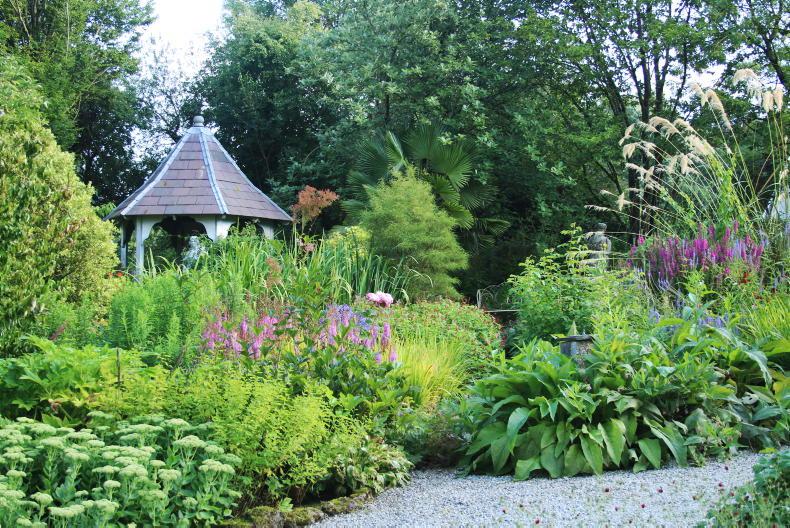
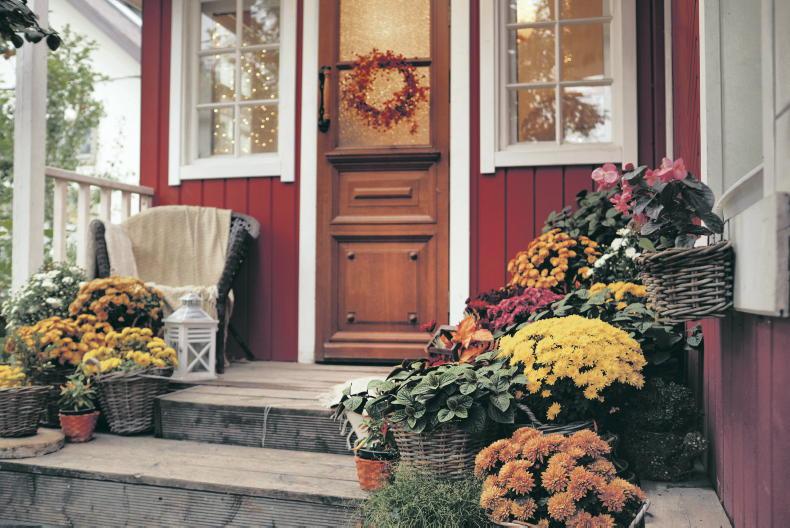
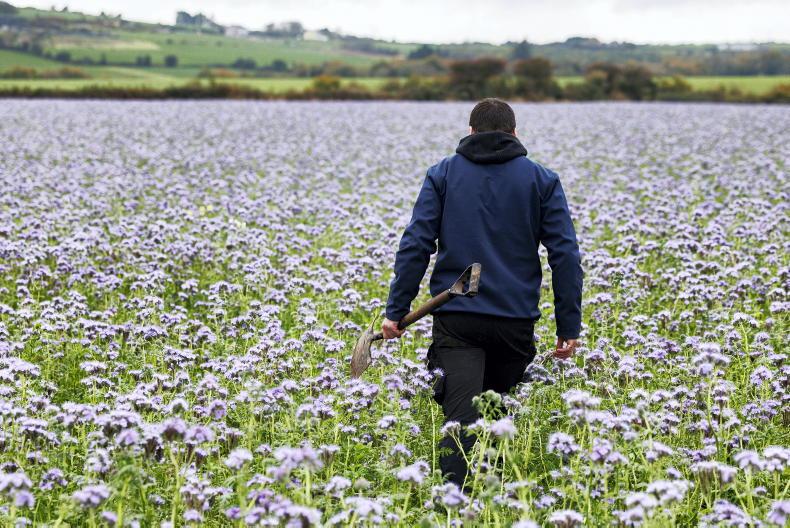
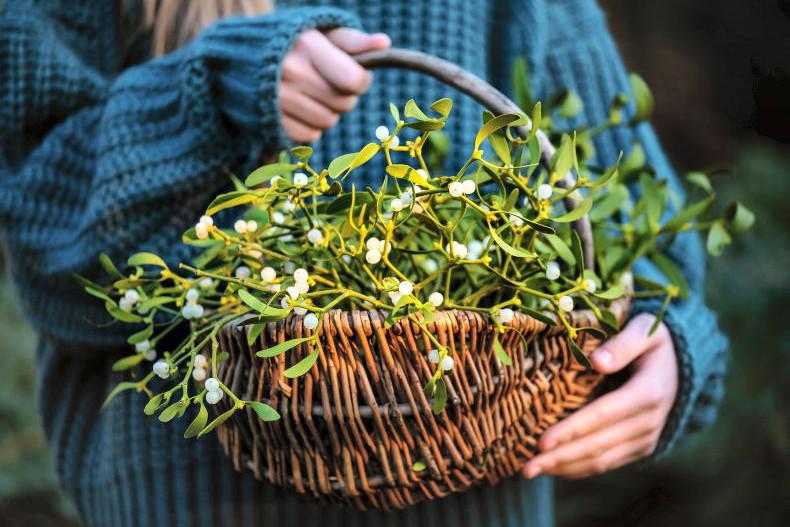
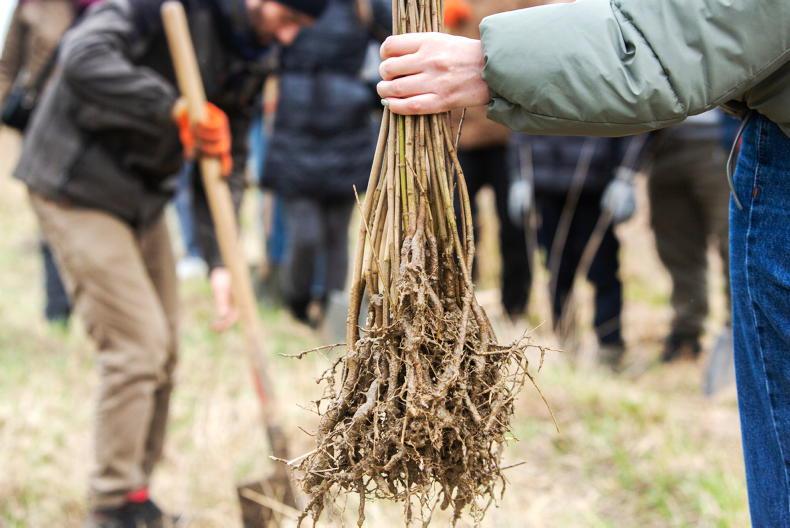
SHARING OPTIONS